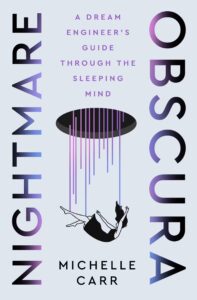
Why Do We Need to Dream?
Michelle Carr on the Emotions, Memories, and Feelings We Have While Dreaming
We’ve explored some of the science around what dreams are made of and how dreams work, but the question remains: Why do we need to experience dreaming? Surely the brain could simply organize memory and regulate emotion unconsciously while we sleep. What does our conscious encounter with dreaming add to this picture, if anything?
The answer may lie in the role of feelings as a key to both generating dreams and driving dream function.
Neuroscientist Antonio Damasio describes consciousness itself as “the feeling of what happens.” It’s the subjective side of our biological existence, an inner experience of the world. As a sensing being, I witness color, sound, shape, movement. As a feeling being, I form a relationship to these sensations: What is this color, this sound, this movement, to me?
Feelings add value to the perceptions or images that evoke them; they offer an interpretation. Through feelings we come to find meaning in the world. Feelings also give rise to salience (“Is this important?”) and valence (“Is this good or bad?”). These provide us with an impulse, guiding us toward where and how to act in the world.
The perception of subjective feeling relies on a sort of mind-body association, where our physical sensations are linked to memory.
Feelings underlie our sense of meaning not only in the external world but also in our imagination of inner worlds. In sleep, our feelings continue. We consciously feel what it is like to experience dreaming. Some feelings become so intense that the dreamer is stirred out of sleep laughing or crying, overwhelmed by imagination. If the dreamworld is a reflection of our everyday experience, why is that inner world sometimes amplified, in vivid—and at times marvelous or overwhelming—dreams and nightmares? Why do we revisit our very worst feelings, with traumas reenacted and fears dramatized? From where do we conjure the nightmare or her more gracious lunar twins, all manner of lucid and euphoric dreams?
Many scientists presume dreaming is closely tied to our processing of emotion because dreaming is so quintessentially emotional and so often calls back to emotional memories.
A broader perspective frames dreaming as based in feeling, which encompasses emotion and also includes all manner of bodily sensation. The perception of subjective feeling relies on a sort of mind-body association, where our physical sensations are linked to memory—the smell of a perfume reminds me of my mother and brings with its scent a pleasant feeling of nostalgia, warmth, and family. We fuse with each sensation a plethora of learned meaning, and perception becomes woven with memory and experience. We come to understand the outer world through its feeling—what each percept feels like and means to me.
Many people think of feelings as containing only emotion. Of course, emotion is one salient type of feeling characterized by clear visceral sensations: Think fear, joy, anger, sadness. Emotions are often instinctual—fear, for instance, is triggered by threats to survival—and the accompanying sensations prepare the body physiologically to respond, to fight or flee.
But emotions can also be shaped through the lens of personal history. A learned fear of abandonment sees a partner being distant as a threat to survival: a fight, flight, freeze response erupts at the thought of losing someone.
Most of the time, our feelings are rather layered. Exposed to the waking world, multiple feelings rise and fall in response to the changing environment. Our mind is scanning, selecting, and categorizing stimuli. Sensations in our periphery (light, motion, temperature) compete with those at the level of autonomic (heart rate, breath rate) and metabolic systems (hunger, thirst), and even ongoing emotional and psychological concerns (a recent embarrassment or relationship trouble). All of this is mixing in with the demands of any ongoing task, keeping our experience somewhat tethered and pulled toward a stable goal.
From this abundance of information, our feelings highlight constellations of meaning. We perceive elements that are salient, of relevance to our being. We do not perceive the world simply as it is. Our experience is much more dreamlike, an overlay of thoughts, images, sensations, emotions—this barrage of information that we navigate by feeling. Feeling acts as a sort of internal compass, a “narrative line upon disparate images” that guides us through the “shifting phantasmagoria which is our actual experience.” We move toward self-relevant stimuli on the path to personal goals.
How does dreaming do this? How do we, through dreams, craft images to express such diverse feelings?
When we cross the threshold into dreaming, our internal compass remains. We continue to sense an internal perceptual surface— hunger, thirst, pain; we witness the replay of recent sense impressions, the falling snow, the drumming highway. We surf the waves of current concerns and sift through memories, relatively untethered—and absent the constraints of the external world, there is much less of a constant to anchor us.
Many dream scientists describe a process where affect, feeling, or a felt sense actually guides the river of consciousness—what we dream up and experience from moment to moment while asleep. They describe how reverberations of feeling through memory give rise to metaphoric dream images. Subtle and nuanced feelings, like the empty ache of loneliness, can be captured in an image of falling to the depths of an echoing well. Dream images in this way can embody many aspects of feeling: emotion, bodily senses, even abstract cognitive sensations (like the curious cognitive feeling of knowing that you’ve forgotten something, or knowing when you’ve rightly remembered it).
How does dreaming do this? How do we, through dreams, craft images to express such diverse feelings?
In the first place, feelings provide an undercurrent to the connections made in memory, drawing together elements through feelings of similarity. Take state-dependent memory, for instance, where entering into a certain feeling lifts familiar memories to the surface. To give a concrete example, in a study of scuba divers, when information was learned underwater, later memory was better if the divers were again underwater (as opposed to on land), or even if they imagined being underwater. In another example, the feeling of getting into bed or drifting off to sleep can tickle the recall of a forgotten dream from the prior night. Feelings are imbued beneath a memory’s content, connecting the dots to other like-minded experiences.
This process, where feelings drive associations, permeates dreaming, where multiple memories and sensations are woven into images that convey specific feelings.
To illustrate this with a curious example: We know that dream characters are often inaccurately represented in dreams. Instead, dream versions of friends or family members can differ radically in appearance and behavior from their waking life counterparts, and even shift in form from scene to scene: A good friend appears as a cat, a sibling morphs into the persona of a celebrity.
And yet, a sure feeling allows us to recognize these dream characters, composites of faces from memory. In fact, dreamers rely on what’s called a “feeling of knowing” to recognize people and places in their dreams, even when these images bear no resemblance to waking life. We are able to feel the undercurrent of meaning in these bizarre amalgamations of imagery.
Absent the constants and demands that tether waking life, we drift freely through memory networks and enter without limits into our personal past, reliving experience through dreams.
In waking cognition, too, we experience similar “feelings of knowing” as we sense our way through connections in memory. This phenomenon can be observed in creativity tasks, where subjects are often able to sense that they are approaching a solution in memory just prior to realizing it. For instance, subjects report a “feeling of knowing” just before solving a word associations task, sensing the link between seemingly unrelated words, sometimes feeling this knowledge on the tip of their tongue just prior to discovery. We are able to consciously experience this associative process of the mind, feeling the connections in memory.
Another example can be seen in what’s called “mind pops,” where a jingle or word suddenly pops into mind seemingly out of nowhere; these little mind pops are primed by associations—a simple sensation or thought or feeling encountered earlier triggers their burst into mind.
This process of experiencing associations in memory permeates both dreaming and waking cognition. Of course, several neurocognitive features of sleep discussed earlier differentiate dreaming from waking cognition. One unique feature of dreaming is the breadth of memory access available, and the lack of external sensory constraints on the dreamworld (in other words, unlike waking, there is no constant form to the dreamworld, it is constructed endogenously from moment to moment). Absent the constants and demands that tether waking life, we drift freely through memory networks and enter without limits into our personal past, reliving experience through dreams.
But what is the purpose of all this feeling? And all of this reexperiencing through dreaming?
To start with, we know that in waking life, our conscious experience of feelings is functional in part because feelings are hedonically valenced—that is, they are immediately either pleasant or unpleasant. This valence carries implicit meaning and directs our actions in the world, either to seek out and improve upon pleasant states or to eliminate and avoid unpleasant states. Even the most basic feeling of thirst or coldness or fatigue makes demands on us to do something: We drink to quench thirst, sleep to quell fatigue. Feelings thus have an inherent purpose: They are signals of need that arise in consciousness to prompt a necessary response.
Despite the bizarre landscape of dreaming, our feelings remain familiar and drive us to act, as they do in waking life.
This is a primary function of feeling. Our desire to feel good (and not bad) entrains us to fulfill our bodies’ needs. Feelings accomplish this by being nuanced and precise: The badness of anger is different from fatigue is different from loneliness. These feelings differ in personal ways, informed by history. And through experience, we learn how to reconcile these feelings via interactions with our bodies, with other people, and with the world around. Even more, we learn through imagination and dreaming, too.
To first look at waking imagination, consider that at any given moment, there are countless feelings we are carrying: Emotional and bodily needs compete as we move about and respond to the demands of living. Concerns about relationships or work are hovering on the mind, and our imagination is often grinding through spurious scenarios, gauging how to manage these situations. We imagine what it would be like to react with this or that behavior or comment: how it would feel, what would happen next.
Dreaming displays a similar process of exploring and enacting imagined scenarios, albeit in more dramatic fashion than waking daydreams. Dream feelings can act as a sort of barometer in this context: Our emotional response tells us whether the possibilities tested are important or useful to remember, whether the outcome feels optimal or satisfactory.
On the contrary, certain dream scenarios may present abject failures, not to be attempted in waking life. Dream scenes that induce intense feelings of fear or disgust, like nightmares, would be marked to avoid at all costs in the future.
The unusual contents of dream scenarios, compared to waking daydreams, are spurred by the breadth of memory access described already. Despite the bizarre landscape of dreaming, our feelings remain familiar and drive us to act, as they do in waking life. Perhaps more freely than in waking, we can explore the felt consequences of this or that action and seek solutions that feel satisfying.
Indeed, feelings don’t go away unless resolved; they linger and reappear stubbornly. (Take the typical dream of trying and trying to find a bathroom—unable to satisfy a real urinary need, we just keep searching—a classic dream). “Loop dreams” can also occur, where the mind plays out a particular scenario to one possible conclusion, then restarts to try another version, just to see how it feels.
Importantly, if feelings are functional they can impact the practical outcomes of sleep. In other words, this experiential nature of feeling dreams allows dreaming to have a function, above and beyond a simple offline function of sleep. We can first look at the implications of this claim on a practical level.
__________________________________

Excerpted from Nightmare Obscura by Michelle Carr. Published by Henry Holt and Company. Copyright © 2025 by Michelle Carr. All rights reserved.
Michelle Carr
Michelle Carr is the director of the Dream Engineering Laboratory in the Center for Advanced Research in Sleep Medicine, an assistant professor at the University of Montreal, and a former president of the International Association for the Study of Dreams. Alongside her research and work as a dream engineer, she has published numerous scientific papers, a popular Psychology Today blog, and articles for New Scientist, Aeon, and Scientific American.












